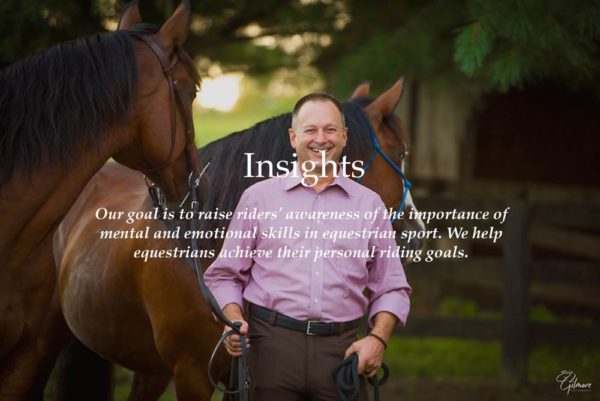WE SUPPORT, CHALLENGE AND INSPIRE EQUESTRIANS
We hope you will enjoy our insights in the forms of Casual Conversations, videos and articles aimed at helping the equestrian transform their relationships with their horses. We are passionate about sharing our knowledge, tips, tricks, and experiences.
Take a Breath
There is a lot of talk these days, in almost every setting, of the value of breath work. There are numerous breathing techniques which function to lower a persons activation or help a person regulate their emotions. There is deep breathing, 4-7-8 breathing, spot focus breathing, diaphragmatic breathing, box breathing, and many other variations. I teach these methods regularly to help people center and calm themselves in the midst of anxiety and panic, or to help them in high pressure performance situations.
Earlier this week I was driving home and I took a deep breath. My wife asked, “What was that?” Typically I would respond that I was letting go of something; tension from the day, a momentary stress, or a challenging ride. This day I realized that I was amping myself up. I was using my breath to “stay in the game.”
Every one has a default place they go when they are stressed by the world. Many people quickly go to activation or anxiety which helps them motivate them to act. My youngest son is like that. I don’t think he has ever missed a deadline in his life. I am different. My default is withdrawal from the world, finding ways to depress or numb my feelings. As a result, I am more of a procrastinator.
Back to the deep breath that day. We have a lot of good things going on at Riding Far. We have clients and clinics and courses in development. We have multiple irons in the fire. All of this is extremely exciting and… you guessed it, stressful. My personal challenge is not to manage my anxiety. It is to stay activated, stay anxious. I work to become comfortable with my anxiety, or at least tolerate it, so I can continue to get things done. In that moment, I drew a breath to raise my energy and activation…to stay in the game.
Breath is powerful. Use it well. Use it to calm yourself. Use it to regulate yourself. Use it to activate and sustain your efforts. Use it to stay in the game. ~ Paul

My Week With Tom Curtin
A week ago today I swung my saddle onto the back of a five-year-old quarter horse under the watchful eye of Tom Curtin.
Psych Saturday – What Does It Take? … Engagement (and I mean yours)
Meet Bugsy
About 2 months ago, an unexpected joy found her way into my life. Thanks to Abigail, Julia, Justin, and Tara, a nine-month-old emaciated stray from Arkansas, affectionately named Bugsy because of her extraordinary ears, joined our family. I wasn’t looking for another dog. In fact, I had been adamant about not adding to our pack of three. I often thought that when our oldest dog Curlie, a spry 18 years, passed on, I would think about getting a puppy. But, no new dogs until that time.
There are times in our lives when opportunities present themselves unexpectedly. We may not be ready for them, and we may not even be wanting them, but in some quiet place deep inside of us, we know that saying “Yes” is the right answer. Bugsy was one of those gifts from the universe. Perhaps it was the way she greeted everyone like they were an old friend, or the way she enthusiastically wrestled with our 4-year-old Basset mix, or the way she respectfully let Curlie be, or the way she mirrored our 10-year-old Jack Russel mix’s cat-like behavior when they were alone together. Still, she fit our home and our lives like a favorite old slipper.
Whether you call them gifts, blessings, or good fortune, these impactful opportunities or choices have a way of stirring us out of our well-worn routines and challenging our complacency. It is easy to focus solely on the positive. I love Bugsy’s snuggles and companionship. She is also a fabulous partner in play, tirelessly retrieving the ball or toy and respectfully depositing it at your feet. She is affectionate, kind, and respectful of my clients and offers a sense of connection and comfort for many who are apprehensive about starting therapy. However, that is not the whole story or the totality of her gift to me.
Bugsy is whip-smart and learns amazingly quickly. There is little room for me to indulge my negative emotions. One grumpy, irritated snap or quick grab to “catch her,” and I am repairing the insult to our relationship for days. She elevates my self-awareness and re-energizes my commitment to managing both my emotions and my behavior.
There are also times when, for reasons unknown, she is a destructo-monkey. After weeks of sleeping peacefully and patiently in the car on her luxury dog bed as I worked with my horses, she chose one day to chew through the strap of my $300 helmet, eat a hole in a $150 saddle pad, shred assorted papers and cups, and then start on seat belt modifications.
I remember the sinking feeling as I discovered the damage. Then, there was the rising anger and frustration. Finally, there was a flash of self-awareness and a pause where I had one of those amazing “blinding flash of the obvious” moments. I was able to comprehend that she was simply being a puppy. This was not about me, not filled with malevolent intent. The only thing that was about me was the need to take responsibility for forgetting she was a puppy and creating a context in which all of the destruction could happen. That moment gave me the opportunity to practice perspective-taking, awareness of another’s experience, and patient acceptance to boot.
This may be one of the greatest gifts arising from my relationship with Bugsy. The greatest because it applies to every relationship in my life. It applies equally to my marriage and family and my relationships with my clients. And it goes without saying that is also an essential awareness in my relationship with my non-human animal friends.
I eagerly look forward to the adventures that Bugsy will bring into my life. I relish the opportunity for learning and growth. I also wish that each of you is blessed in similar ways. That you are presented unexpected gifts from the universe to which you get to say “yes.” And, in that “yes,” you get to experience the gifts of joy and challenges that they bring.
~ Paul
PC – Bella Barr

Are You Available for Learning?
Have you every been in a lesson and found yourself distracted, down on yourself, anxious, or afraid? I think that all of have been there to one degree or another. What I would love for you to reflect on is the question, “In those moments, how available were you to taking in new information and learning?” There is a tipping point for each of us. As our feelings get stronger there is a moment where those feelings shut down our ability to think, as well as our curiosity, interest, and outward attention.
 This process is natural and is not a cause for concern if we have the understanding and tools to effectively deal with our negative thoughts and feelings, and bring our learning selves back on line. I have written at length in the past about personal strategies to regulate strong emotions. They include skills and practices like breath work, mindfulness, imagery, resourcing, reframing, and many more. However, today I don’t necessarily want to speak to the riders. Rather, I want to address, or rather support, the instructors and trainers.
This process is natural and is not a cause for concern if we have the understanding and tools to effectively deal with our negative thoughts and feelings, and bring our learning selves back on line. I have written at length in the past about personal strategies to regulate strong emotions. They include skills and practices like breath work, mindfulness, imagery, resourcing, reframing, and many more. However, today I don’t necessarily want to speak to the riders. Rather, I want to address, or rather support, the instructors and trainers.
It occurred to me decades ago that the vast majority of riding instructors never receive any formal training in the science and art of teaching. Instead, they struggle through, using trial and error. They get some support from colleagues, usually around the most difficult teaching situations. Yet, mostly it is sink or swim. Over the years, I have enjoyed providing support to instructors by talking through difficult teaching situations, helping them better understand the nature of their students, and providing them strategies designed to help their students learn.
Recently, I had the honor of presenting on this topic to the USEA Instructor Certification Program’s educational symposium. My talk was focused on opening a window or two that would guide these instructors to essential information, helping them elevate their teaching and their student’s experiences. One of those windows was on creating positive learning environments and a culture which promotes psychological safety.
A positive learning environment and psychological safety are essential. They are essential because without them many, if not most, of our students will be unavailable for learning. We are all born with an innate drive for safety and security, as well as a drive for curiosity, exploration, and play. When we feel threatened, our drive for safety and security wins out every time. The way it does this is by shutting down the parts of our brain that support our curiosity and are essential for learning.
There is long standing attitude in our sport where verbal abuse, yelling, and screaming masquerade as lessons in toughness. The ability to tolerate this aggression is seen somehow as a badge of honor. Some might argue that they learned to ride well in this culture. My argument would be that if they learned to ride well, they learned despite this culture rather than because of it.
As an instructor, if you want your students to succeed and get the most out of their lessons and other learning experiences with you, invest in your stable’s culture. Create an environment in which students are respected, valued, and connected to something larger than themselves. This investment will pay off in spades. Your students will be eternally grateful. As a student, we can help our teachers understand what we need to stay win the right side of that tipping point, keep our curiosity and learning brain online, and make sure that we are available to learn.
~ Paul

The Hidden Key to High Performance
 I spend a lot of time reading, listening to podcasts, and attending trainings on high performers and performance psychology. As a geek and techie from way back (think technological stone age), I am as excited as the next person about the latest neuro-psycho-bio hack. I love the advancement of our knowledge and understanding where it connects to human performance. I make it my business to stretch myself, learn new skills, and integrate the new and exciting with what I already know to be helpful.
I spend a lot of time reading, listening to podcasts, and attending trainings on high performers and performance psychology. As a geek and techie from way back (think technological stone age), I am as excited as the next person about the latest neuro-psycho-bio hack. I love the advancement of our knowledge and understanding where it connects to human performance. I make it my business to stretch myself, learn new skills, and integrate the new and exciting with what I already know to be helpful.
One of the measures I use to evaluate new discoveries and ideas is how well they align with core ideas from a variety of different perspectives and disciplines. While I never summarily dismiss ideas that are “way out there,” I have always been an integrationist and get excited when ideas converge and I discover the commonalities from different ideological camps. One of these points of convergence relates to the underlying foundations of high performance. That is the fundamental importance of human wellness as a foundation for high performance.
Surprisingly, wellness can be a difficult term to define. My favorite definition so far has been offered by Dan Siegel, MD. In his book Mind: A journey to the heart of being human he offers the acronym FACES to point to what he considers the foundational aspects of wellness; Flexible, Adaptive, Cohesive, Energized, and Stable. As helpful and interesting as these target attributes of wellness might be, it was Dr. Siegel’s description of a well functioning system which he believes underscores human wellness that really captured my imagination.
At the risk of oversimplifying, a well functioning system is one where there is an open and free flow of energy and information between all the different parts of the system. I was working with a rider yesterday and I was reminded of of deeply influential these ideas are in my work. It is hard for me to imagine any suggestion or intervention I make that is not easily described in these terms. In yesterdays session we talked about building physiological awareness (flow of energy and information between our body and our conscious mind). We later talked about mindfulness as a foundation for growing emotional tolerance and reducing reactivity (flow of energy and information between attentional systems, conscious thought, emotional systems and behavioral systems).
The bottom line is that we can hack away making use of the latest research and information about neurobiology or physiology or psychology to enhance our performance; but, if we don’t attend to our fundamental wellness as human beings it is a lost cause. The hidden key to high performance is wellness. The hidden key to wellness is integration. We need to nurture and care for each “part” of ourselves and, we need to invest in the healthy integration of body, mind, and spirit. If we invest in our overall wellness we open the doors to reach our peak potential. ~ Paul
TURN INSIGHT INTO ACTION
THIS IS MORE THAN YOUR TYPICAL SPORT PSYCHOLOGY OR HORSE TRAINING.
We have dedicated ourselves to create transformative experiences for riders and horses through compassionate and expert education, mentorship and guidance. We meet every rider and horse where they are and create deeply personal and meaningful experiences.





